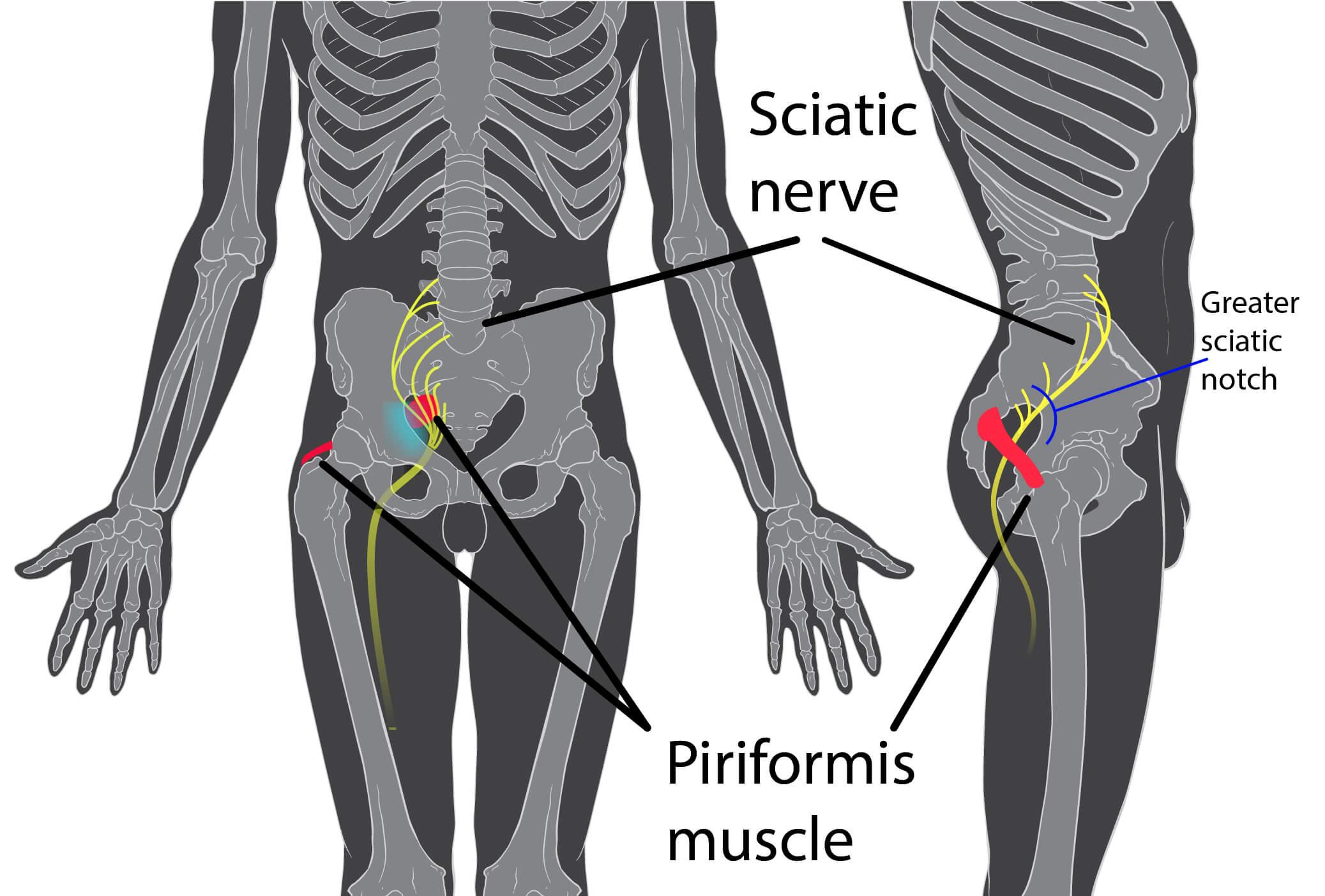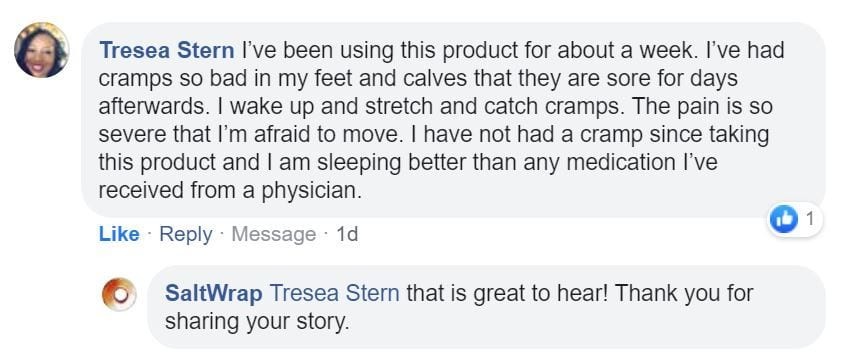RESEARCH REVIEW / Sciatica
UPDATED OCTOBER 2024
The Real Cause of Sciatica
New Study Reveals Why Sciatica Therapies Often Fail and What to Do for Long-Term Relief
Doctors and neurologists have long been stumped by the exact cause (and remedy) for sciatica.
Because sciatica has a physiological component (pinched or trapped nerves), therapeutic movement must be used to address the core issue.
But even with successfully relieving nerve pressure with targeted movements, symptoms often persist due to nutrient deficiencies and nerve dysfunction.
Studies indicate this is caused by changes to neuromuscular function that must be addressed with a two-pronged therapeutic approach:
-
Corrective Exercise (muscle activation and stretching)
-
Therapeutic Nutrition (focused on key nutrient deficiencies)
It is estimated that 10-40% of the U.S. population meet the symptom criteria for sciatica. Though symptoms usually worsen at night, morning and afternoon sciatica pain is common as well. Strangely, even daytime symptoms can be linked back to sleep patterns and movement habits before bed (more on this below).
Unfortunately, many people who suffer from sciatica never seek medical attention because they believe it is not serious enough, or will not be taken seriously by practitioners.
Sciatica has proven to significantly reduce both sleep quality and overall quality of life. Also, unlike typical muscle pain or cramps, sciatica symptoms often do not resolve naturally over time.
Doctors and neurologists have long been stumped by the exact cause (and remedy) for sciatica.
Because sciatica has a physiological component (pinched or trapped nerves), therapeutic movement must be used to address the core issue.
But even with successfully relieving nerve pressure with targeted movements, symptoms often persist due to nutrient deficiencies and nerve dysfunction.
Studies indicate this is caused by changes to neuromuscular function that must be addressed with a two-pronged therapeutic approach:
-
Corrective Exercise (muscle activation and stretching)
-
Therapeutic Nutrition (focused on key nutrient deficiencies)
It is estimated that 10-40% of the U.S. population meet the symptom criteria for sciatica. Though symptoms usually worsen at night, morning and afternoon sciatica pain is common as well. Strangely, even daytime symptoms can be linked back to sleep patterns and movement habits before bed (more on this below).
Unfortunately, many people who suffer from sciatica never seek medical attention because they believe it is not serious enough, or will not be taken seriously by practitioners.
Sciatica has proven to significantly reduce both sleep quality and overall quality of life. Also, unlike typical muscle pain or cramps, sciatica symptoms often do not resolve naturally over time.
Typical Muscle Pain vs. Sciatica
Typical Muscle Pain
-
Painful, intermittent episodes of muscle cramps, pain, and soreness
-
Throbbing or dull ache feeling
Often caused by physical exercise or unaccustomed vigorous exercise
-
Condition self-resolves over time
-
Symptoms onset during period of inactivity or extreme hyperactivity
Sciatica (Nerve Pain)
-
Leg discomfort that presents as numbnness, tingling, burning, shooting, or aching feeling
-
Typically affects one side more than the other
-
Onset during evening rest periods or sleep
-
Condition does not self-resolve over time
-
Caused by pinched nerve or overactive nerve unit from previous compression
-
Often requires a "re-setting" of the natural sleep cycle
According to the Mayo Clinic, WebMD, ClevelandClinic.org, the primary focus of sciatica treatment is what as known as supportive care in the medical field. One health website summarizes supportive care in this manner: "ice packs and monitoring for changes or improvement." Another common recommendation via the supportive care approach is to use nonsteroidal anti-inflammatories (NSAIDs) to help manage discomfort.
Unsurprisingly, this symptom-based treatment philosophy leads to lackluster results and temporary relief at best.
This leaves those affected by sciatica with no long-term, safe treatment options that both address the underlying causes and provide lasting relief.
That is, until now.
Recent studies crossing-over the categories of neurology, physiology, and sleep health show promise for finally conquering this cluster of nighttime nerve and leg muscle symptoms.1
Crossing Over: How a Multi-Disciplinary Approach Could Finally Provide Sciatica Relief
In our exercise therapy practice, we commonly work with clients who are experiencing sciatica — usually new clients unaccustomed to vigorous exercise and those with severe mobility restrictions.
Though addressing underlying sciatic nerve entrapment with exercise therapy is recommended, nocturnal leg muscle dysfunction as a category presents a much different problem and group of symptoms.4
"To resolve sciatica, you need a two-pronged approach:
targeted movement to support nerve flow, and a nutrition approach that treats lingering symptoms."
We always opt for physiological (exercise/stretching) methods and addressing lifestyle factors before moving on to any kind of pharmaceutical or natural supplement intervention.
But sciatica requires a different approach.
Our experience working with clients suffering from this condition prompted this in depth research review.
This is exactly the kind of problem area where we thrive.
Issues and conditions that fall between the cracks of conventional medicine, exercise therapy, and natural supplements.
In this Research Review edition, we explain why sciatica (especially at night) is so difficult to treat, and what leading neurophysiological studies show could be the solution for this debilitating condition.
3 Simple Movements for Sciatica Relief
The first thing you should do if you suspect sciatica is see your physician and request an exam to rule out bulging discs or bone spurs that could be causing nerve compression. Any exercises performed with these conditions should be closely supervised, so first get clearance to safely participate in a physical fitness program.
To start, sciatica symptoms are often worse at night because lying down increases the amount of pressure placed on your sciatic nerve. Sitting for longer periods of time can have this same affect. The easiest way to prevent nighttime sciatica episodes is to perform three simple movements immediately prior to bed.
These movements are designed to address the three primary limitations we have observed in sciatica patients:
-
Poor nerve flow through the posterior leg compartment (glutes/butt, hamstrings, calves, and ankles).
-
Limited hip mobility that places further strain on low back muscles and the sciatic nerve.
-
Activate and lengthen the piriformis muscle, a specific muscle of the gluteal region. In some cases, sciatica symptoms will dissipate solely by targeting this deep-player muscle in your glutes. Why? Because what appears to be sciatica is often a condition called piriformis syndrome — a condition where inactivity of the piriformis muscles causes pain, numbnes, and tingling in your butt and hips.
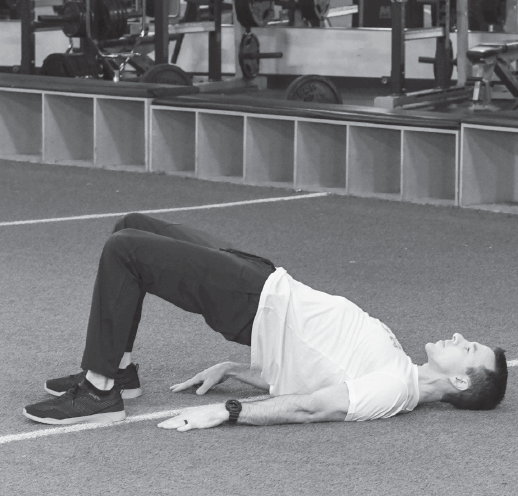
(1) Glute Bridge
-
Lie on your back with hands at your sides, knees bent, and feet planted firmly on the floor.
-
Contract your glutes and raise your hips until your chest, pelvis, and knees are in a straight line.
-
Hold this position for 10 seconds, focusing on contracting the muscles in your glutes (butt).
-
Relax, then repeat one more time.
The Glute Bridge effectively activates your glutes and lengthens your hip flexors, taking pressure off the sciatic nerve. It also activates the piriformis muscle, an often neglected deep-layer muscle in your glutes that is linked to sciatica pain.
(2) Pigeon Stretch
-
Start on your hands and knees.
-
Bring one leg across your body with your knee bent.
-
Adjust your knee angle as needed to prevent knee joint discomfort.
-
Slowly lean forward until you feel a stretch in your glutes and external hip muscles.
-
Hold this position for 10 seconds, then switch legs and perform the stretch on the opposite side.
-
Relax for a few moments, then repeat one more time.
After activating your glutes and piriformis muscle with the Glute Bridge, the Pigeon Stretch is a perfect follow up to help relax and lengthen tight glutes. This is also one of the best hip stretches to reduce low back strain and reduce sciatic nerve pressure.
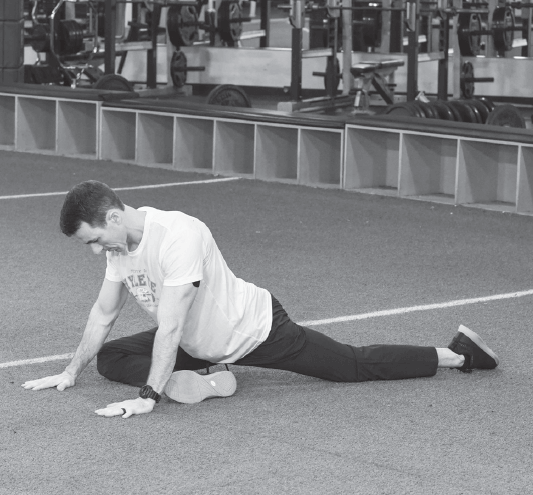
(3) Ankle Glides
-
From a seated position, place a foam roller or pillow under your knees.
-
Straighten your legs until you feel a gentle stretch in your hamstrings.
-
Point your toes downward (see picture 1), stretching the fronts of your shins (hold momentarily).
-
Then, flex your toes toward your body (picture 2), keeping your knees straight (hold momentarily).
-
Repeat for a total of 20 repetitions.
The Ankle Glide exercise appears simple, but is extremely effective for improving nerve flow throughout your entire posterior leg compartment. With this exercise, you get out what you put in. When performed correctly, you will feel a long "nerve stretch" from your feet all the way to your hips when in the feet flexed position.
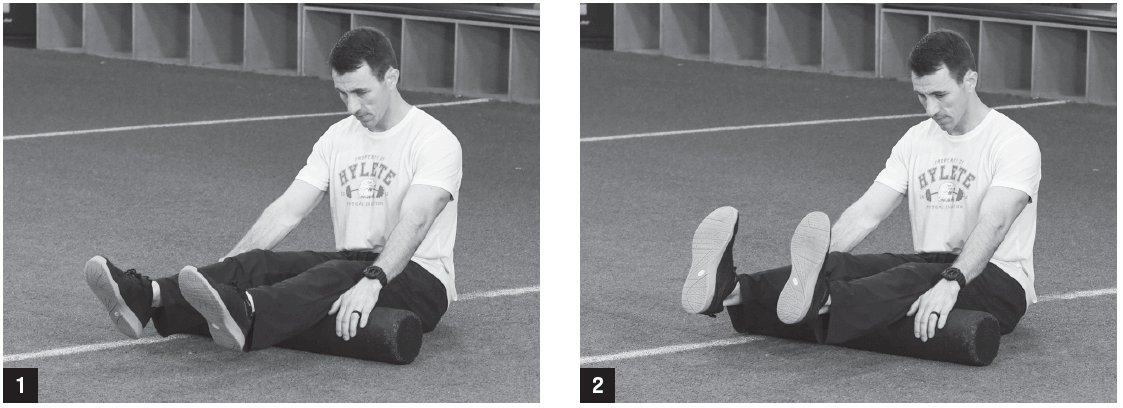
Why Therapeutic Exercise (Alone) Doesn't Work
If you suffer from sciatica, you almost certainly have a compressed nerve or damaged nerve unit that needs addressed with therapeutic movement.
But even after addressing the initial cause (i.e. pinched nerves), sciatica symptoms often persist.
We have discovered a cluster of nighttime symptoms that all share a common thread. This includes nocturnal leg cramps, restless legs, and even sciatica and other nerve-based muscle discomfort.
People who suffer from sciatica and these other ailments often have key nutrient deficiencies and neuro-muscular dysfunctions.
That's why exercise interventions alone won't solve nighttime discomfort — be it sciatica, cramping, tension, or other pain.
The broad category of "nocturnal leg discomfort" is associated with three specific conditions that must be addressed to get permanent relief.
We refer to this group of conditions as Nocturnal Neuromuscular Imbalance (N.N.I. for short).
Nocturnal Neuromuscular Imbalance (NNI): The Root Cause of Night Leg Issues
Nocturnal Neuromuscular Imbalance (NNI) consists of three interrelated conditions
These conditions are linked together, creating a positive feedback loop that is extremely difficult to resolve.
Until now, we didn't have a model for explaining why nighttime leg issues like nerve pain, cramps, and restless legs are so persistent. Or how to solve them.
Now, we do.
Here are the three conditions of NNI.
All three of these must be addressed to break the cycle and get relief from nocturnal leg muscle problems:
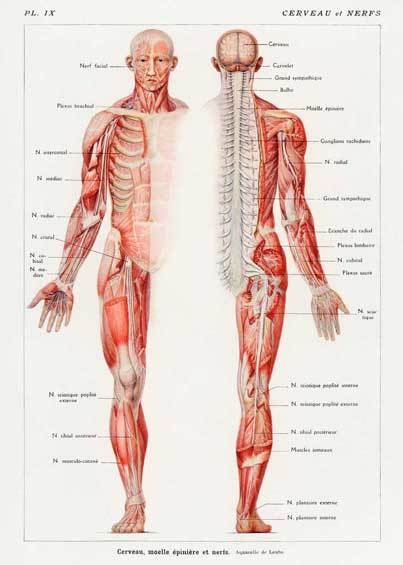
1. Primary Magnesium Deficiency
Virtually anyone who suffers from muscle discomfort has a magnesium deficiency.
So magnesium supplementation should be used.
Magnesium supplements have demonstrated positive effects on cramps and spasms in studies (and in our experience working with exercise therapy clients).
But for nocturnal leg dysfunctions, magnesium therapy alone has proven to be ineffective.
(reference: Family Practice, February 2014)11
Magnesium is an important piece of the puzzle, but it won't solve the problem by itself.
Magnesium Glycinate should be used immediately before bed (in combination with the key nutrients discussed below).
Magnesium Glycinate is a combination of two separate compounds: the mineral Magnesium, and the amino acid Glycine.
Glycine has a natural calming effect, making it the perfect supplement to take before bedtime.
Unlike cheaper forms such as Magnesium Oxide, Magnesium Glycinate is readily absorbed into the intestinal walls. This prevents the "laxative effect" that many people experience when taking cheap magnesium supplements.
2. Key Sleep Nutrient Deficiencies
There are three other sleep nutrient deficiencies common in people who lose sleep to nocturnal leg issues.
These three safe, proven supplements can be administered prior to bed to combat nocturnal cramps, spasms, and pain.
1. Vitamin B6 (Pyrodoxine) is involved in over 100 biological processes in the body. Commonly known for its role in food metabolism and Serotonin production, B6 can be found in meats, fish, eggs, nuts and seeds — and is a common added ingredient to fortified cereals and grains.
Studies have shown that poor sleepers have lower intake levels of Vitamin B6.12
Because B6 is a water soluble vitamin and is metabolized quickly, it should be taken immediately prior to bed.
2. GABA and 5-HTP are two amino acids that support relaxation and healthy sleep habits. Though these two amino acids are popular and proven supplements alone, a study published in Behavioral Brain Research (2016) demonstrated they have a synergistic effect on sleep quality and sleep cycle architecture when combined.15
Researchers from the study concluded:
"Our available evidence suggests that the GABA/5-HTP mixture modulates both GABAergic and serotonergic signaling. Moreover, the sleep architecture can be controlled by the regulation of GABA receptor and GABA content with 5-HTP.” 15
3. Melatonin is a naturally occurring compound secreted by the pineal gland in the human body, commonly used in supplement form to reduce symptoms of “Jet Lag” and fall asleep faster.
In clinical studies, melatonin supplements have clearly demonstrated positive effects on sleep quality (and interestingly enough, was also correlated with reduced body weight).
For people with nocturnal leg cramps, melatonin supplementation can help re-establish their disrupted Circadian Rhythm.
This leads us into the final component of Nocturnal Neuromuscular Imbalance (NNI) — this is what makes conquering nocturnal leg dysfunction so difficult: disrupted sleep architecture.
3. Disrupted Sleep Architecture (Circadian Rhythm)
If you were to take away only one concept from this review, it would be this:
In order to solve nocturnal leg dysfunction and break free from NNI, you have to re-establish a healthy sleep architecture.
Focusing on sleep health — not just the pain — is key.
The sleep nutrients we described above will help jumpstart this process.
But it takes a more holistic approach to make lasting changes.
How to Correct Nocturnal Neuromuscular Imbalance (NNI)
In order to correct NNI and relieve nighttime pain, you have to accomplish three objectives:
-
Correct key nutrient deficiencies with specific nutrients taken prior to bed.
-
Re-establish a healthy sleep architecture (Circadian Rhythm) to prevent frequent waking throughout the night.
-
Relax both muscles and the nervous system immediately prior to bed.
In our research, we identified 8 natural compounds that help relax tense muscles, reverse nutrient deficiencies, and improve sleep quality.
Together, these nutrients effectively break the NNI cycle and can drastically reduce nocturnal leg issues.
Since there is no viable therapy treatment for nocturnal leg spasms and cramps — and other magnesium or cramp supplements don't work for this condition — we assembled the world's first natural muscle relaxer specifically designed to help you correct Nocturnal Neuromuscular Imbalance and conquer nighttime leg problems for good.
It's called Mag R&R.
Mag R&R is manufactured in a GMP (Good Manufacturing Practices) approved, FDA-inspected facility right here in the USA. It's designed to be taken once per day, immediately before bed.
To test the formula's effectiveness before releasing to the public, we worked closely with our clients suffering from nocturnal leg cramps and took notes on their progress.
We were excited to launch Mag R&R and finally offer a solution to nocturnal leg problems.
But we never could have predicted the overwhelming response from our clients — and people we’d never met who found our product online.
Like Tresea, who wrote us this message on Facebook:
We're extremely proud of how many people are repeat customers of Mag R&R.
Our clients Gale and Jill are both long-term users:
For some of our customers, Mag R&R has been truly life changing:
*Results may vary. Testimonials from Mag R&R customers do not guarantee similar or specific results.
See full list of testimonials on next page.
Since releasing Mag R&R, we've received thousands of emails, reviews, and thank you notes from people who — after years of battling nighttime leg issues — are finally sleeping through the night.
While Mag R&R is not guaranteed to solve your nocturnal muscle issues overnight, many people do indeed experience immediate relief.
The success rate is so high with Mag R&R that we even implemented a 90-day, 100% Money-Back Guarantee
This means we will refund your entire purchase if you don't get the relief you are looking for.
All you have to do is send us an email or use the Contact Us page on our website. No hassles, no questions asked.
Mag R&R truly is the only natural solution designed to correct Nocturnal Neuromuscular Imbalance and break free from nocturnal leg muscle issues.
While it's important for you to understand the science behind Mag R&R, it's also important that you see the real-world results our clients have achieved.
On the next page, we've assembled unedited reviews and emails from people who have taken Mag R&R.
You can also read more about the 8 natural ingredients in this ground-breaking formula.
If you're ready to finally conquer nighttime muscle discomfort, click the button below to read real, verified-purchase reviews from people just like you. Who after suffering with nocturnal leg issues for years, are now finally getting relief and sleeping through the night:
ABOUT SALTWRAP
Our mission at SaltWrap is to bridge the gap between sports performance and longevity.
To provide the tools you need to stay healthy while tackling your fitness goals.
We create solutions in the categories of nutritional supplements, books & media, and therapeutic fitness equipment — all designed to keep you healthy and performing at your best. Our products and content help you achieve your highest level of fitness, without sacrificing your health later.
Read the full About Us page.
OUR REPUTATION Do customers recommend buying from SaltWrap?
See verified company reviews on Reviews.IO and Google Customer Reviews.
RESEARCH REFERENCES
-
https://pmj.bmj.com/content/78/924/596
-
http://dx.doi.org/10.1136/pmj.78.924.596
-
https://www.ncbi.nlm.nih.gov/pubmed/30688424
-
http://www.ncbi.nlm.nih.gov/pubmed/22364157
-
https://en.wikipedia.org/wiki/Reference_Daily_Intake
-
https://www.sciencedirect.com/science/article/pii/S221451411500121X
-
http://www.omicsgroup.org/journals/rapid-resolution-of-chronic-back-pain-with-magnesium-glycinate-in-a-pediatric-patient-2167-0846.1000101.php?aid=3932#8
-
http://onlinelibrary.wiley.com/doi/10.1113/jphysiol.2010.197004/abstract
-
https://www.ncbi.nlm.nih.gov/pmc/articles/PMC1855626/
-
https://www.ncbi.nlm.nih.gov/pmc/articles/PMC1855626/
-
https://www.ncbi.nlm.nih.gov/pubmed/24280947#
-
http://www.ncbi.nlm.nih.gov/pubmed/24606715
-
http://www.ncbi.nlm.nih.gov/pubmed/11983310
-
http://www.ncbi.nlm.nih.gov/pubmed/9727088
-
http://www.ncbi.nlm.nih.gov/pubmed/27150227
-
http://www.ncbi.nlm.nih.gov/pubmed/26327875
-
https://en.wikipedia.org/wiki/piriformis_syndrome
Copyright © SaltWrap, All Rights Reserved
*These statements have not been evaluated or approved by the FDA. This product is not intended to diagnose, treat, cure or prevent any disease.
Disclaimer Representations regarding the efficacy and safety of our products have not been scientifically substantiated or evaluated by the Food and Drug Administration. The FDA only evaluates foods and drugs, not these products. Nothing contained on this site is intended to diagnose or cure.
Should you have any health care related questions, please contact your physician. You should always consult your physician before taking any nutritional supplements, making changes to your health or fitness regimens, or implementing any health related advice. Results will vary depending on the circumstances of each individual. Prior results do not predict, warrant or guarantee a similar outcome. Read our full Disclaimer here.
This site is not a part of the Facebook website or Facebook Inc. Additionally, this site is NOT endorsed by Facebook in any way. FACEBOOK is a trademark of Facebook™, Inc.

